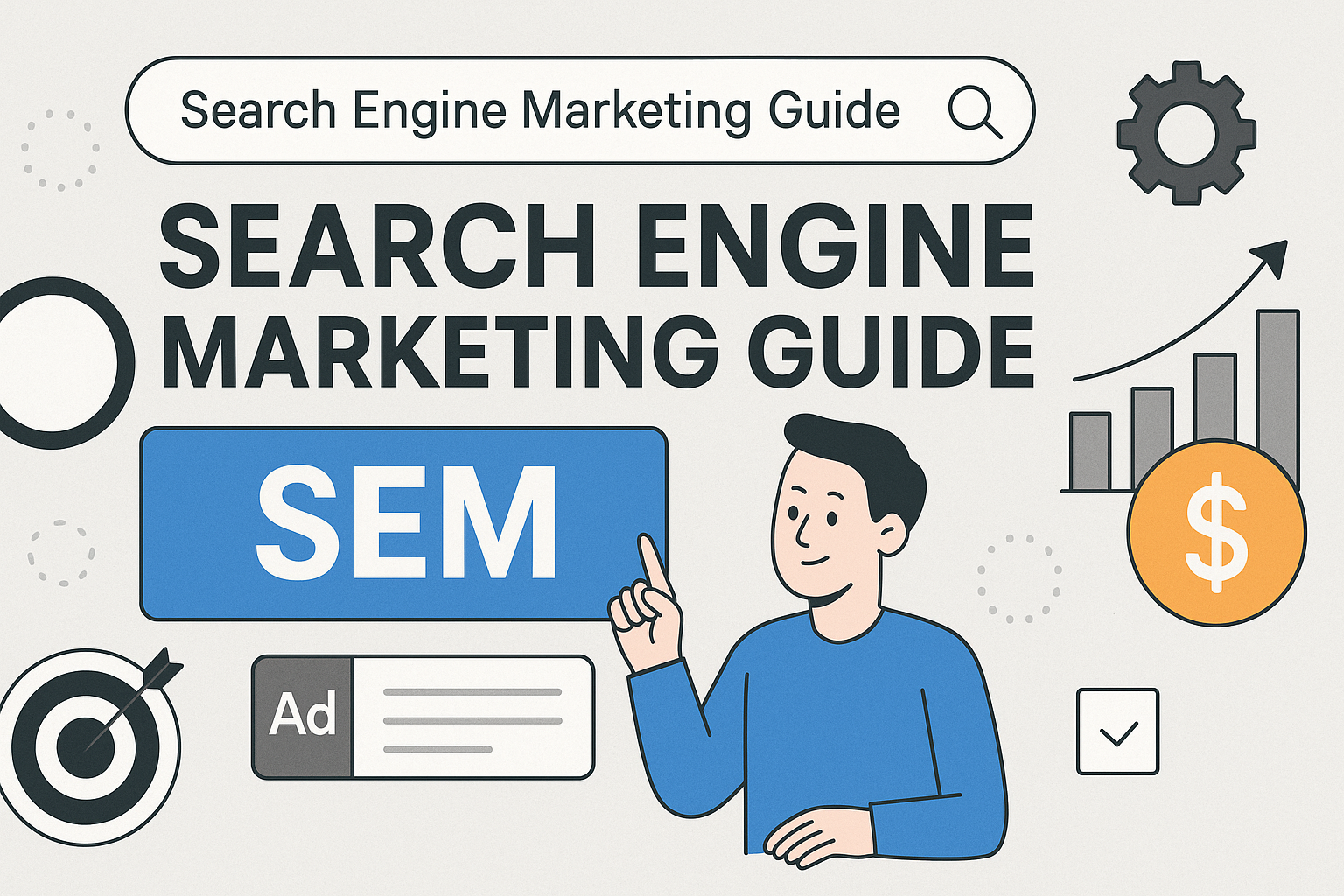The Complete Guide to Search Engine Marketing (SEM): From Basics to Advanced
- By: Admin

Search Engine Marketing (SEM) is a crucial pillar of digital strategy that leverages paid ads on search engines to drive targeted, high-intent traffic. It’s fast, measurable, and adaptable, making it an essential tool for businesses looking to expand their online reach. This guide covers everything you need—from foundational steps to advanced tactics—with a focus on key website adjustments for SEM success.
What is Search Engine Marketing?
SEM focuses on increasing website visibility through paid advertising on search engine results pages (SERPs), primarily using platforms such as Google Ads and Microsoft Advertising. SEM commonly includes:
- Paid text ads (prominent placement on the SERP)
- Product listing/Shopping ads
- Remarketing ads to re-engage previous visitors
SEM vs. SEO: A Quick Comparison
| SEM (Paid Search) | SEO (Organic Search) |
|---|---|
| Paid ads for rapid results | Optimization to earn organic rankings |
| Immediate visibility | Takes time to show results |
| Budget-based performance | Time/resource investment |
| Ads marked with ‘Ad’ label | Listings appear naturally |
Website Changes Needed for SEM
Before running SEM campaigns, certain website updates can significantly impact the effectiveness and return on your ad spend:
- Dedicated Landing Pages: Create landing pages matched to each ad group or theme, with focused content and clear calls-to-action.
- Conversion Tracking Setup: Integrate analytics (Google Analytics, Google Ads tags), and set up goals for purchases, forms, calls, etc.
- Mobile Optimization: Ensure all landing pages are mobile-friendly and fast-loading, with forms and buttons easily clickable on mobile.
- Page Speed Improvements: Optimize images, reduce scripts, and use caching for fast load times—a key quality and conversion factor.
- Clear Messaging & Trust Signals: Highlight your selling points, use customer reviews, and display trust badges to boost credibility and conversion.
- Legal Compliance: Show privacy policies, terms, and cookie banners—crucial especially for collecting leads or remarketing.
- Simple & Secure Contact Forms: Use minimal form fields and always serve them over HTTPS.
- Structured Data for Products: Use schema markup for products/services to enhance both ad performance and user experience.
SEM Fundamentals: How Paid Search Works
- Keyword Research: Find and group relevant keywords your audience searches for.
- Campaign & Ad Group Structure: Properly segment campaigns and groups for precision targeting and measurement.
- Ad Copywriting: Write compelling, relevant ads with clear calls-to-action and keyword insertion.
- Bidding Strategies: Set manual or automated bids based on campaign goals and competitiveness.
- Quality Score Optimization: Improve ad rank and lower CPC by ensuring ad/keyword/page relevance and engagement.
- Landing Page Alignment: Make sure ad promises and landing page offers are tightly aligned for a seamless user journey.
Intermediate SEM Tactics
- Remarketing: Bring back previous visitors who didn’t initially convert with targeted ads.
- Bid Adjustments: Tailor bids by device, time, or location for better efficiency.
- Ad Scheduling: Run ads during periods with higher conversion or engagement rates.
- A/B Testing: Always test versions of ads and landing pages—improve by data, not guesswork.
Advanced SEM Strategies
- Granular Audience Targeting: Use in-market, affinity, and custom audiences for highly specific targeting.
- Dynamic Keyword Insertion: Personalize ads using searcher keywords for higher relevance.
- Ad Extensions: Add sitelinks, callouts, and structured snippets to improve visibility and clickability.
- Conversion Rate Optimization (CRO): Analyze behavior and refine landing pages/ads to maximize conversion rates.
- Competitor Benchmarking: Keep tabs on rivals to adjust your strategies proactively.
Measuring & Enhancing SEM Success
- Click-Through Rate (CTR): Are your ads enticing users to click?
- Cost Per Click (CPC): How efficient are your bids?
- Conversion Rate: Is your landing page turning visitors into leads/customers?
- Impression Share: How visible are you on your chosen keywords?
- Quality Score: Are your ads/pages truly relevant?
- Return on Ad Spend (ROAS): What is your true marketing payoff?
Review your performance reports regularly and continually optimize to improve every aspect of your SEM campaigns.
SEM blends data-driven strategy, creative execution, and continual optimization. The most successful campaigns are built on a well-structured, conversion-focused web foundation that works seamlessly with paid traffic. By making the right technical and content adjustments, you maximize Quality Scores, conversion rates, and your overall marketing return on investment.
Effective SEM delivers when compelling ads meet optimized landing pages and meaningful user experiences.